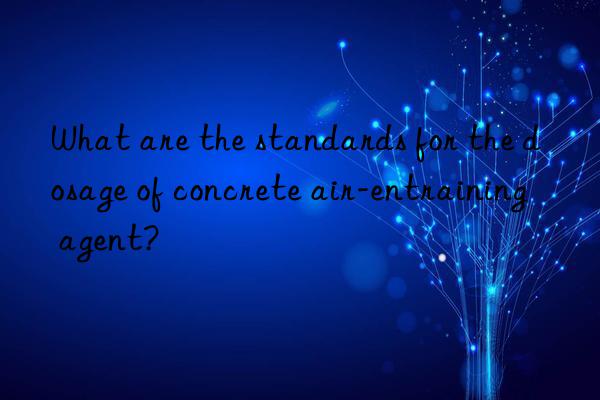
What are the dosage standards for concrete air-entraining agents during production and use? As an industry person, you must not dare to be careless. It all needs to be determined through a certain amount of experimental ratios. What kind of standards are there? The editor of Anhui Yulong New Materials Co., Ltd. will help you understand!
First of all, the dosage of concrete air-entraining agent should be determined after indoor trial mixing according to the air content requirements of the concrete, but it should not be calculated simply based on the manufacturer's recommended dosage.
Secondly, the main function of adding air-entraining agent to concrete is to use the generated microbubbles to block the capillary water channel of concrete, thereby increasing the durability of concrete. Therefore, the required air content is Determines the amount of air-entraining agent.
In addition, the effect of microbubbles after air entrainment is sometimes used to improve the workability of concrete.
Finally, excessive air content in concrete will reduce the interface bonding strength between aggregates and hydrates, thereby reducing the overall strength of concrete. In addition, the air content of concrete will reduce the apparent density of concrete, so concrete with gravity as its main performance should be used with caution.
Specifications for air content in concrete
JGJ55-2011 Section 3.0.7 has regulations on air content. According to the particle size of the stone, the gas content is between 4.5 and 7%.
GB50164-2011 Section 3.1.9 has gas content regulations. According to the particle size of the stone, the gas content is ≤5.5%.
GB T 14902-2003 Article 6.3. The difference between the air content of concrete and the value specified in the contract should not exceed ±1.5%
Adjust the mix ratio to be suitable for concrete construction at around 0°C:
Specific methods:
①Selecting the appropriate type of cement is an important means to improve the frost resistance of concrete. The test results show that early strength Portland cement should be used. This cement has a large heat of hydration and releases the highest strength in the early stage. Generally, the 3-day compressive strength is approximately equivalent to the 7-day strength of ordinary silicon cement, and the effect is obvious.
② Reduce the water-cement ratio as much as possible and slightly increase the cement dosage, thereby increasing the heat of hydration and shortening the time to reach age strength.
③Add air-entraining agent. While keeping the concrete mix ratio unchanged, the bubbles generated after adding the concrete air-entraining agent will correspondingly increase the volume of cement slurry, improve the fluidity of the mixture, improve its cohesion and water retention, and buffer the water content in the concrete. The water pressure generated by ice improves the frost resistance of concrete.
④Add early strength admixture to shorten the setting time of concrete and improve the early strength. The more commonly used ones are sodium sulfate (2% of the cement dosage) and MS-F composite early strength water test agent (5% of the cement dosage).
⑤Select aggregates with high particle hardness and few gaps so that their thermal expansion coefficient is similar to that of the surrounding mortar.
</p



 微信扫一扫打赏
微信扫一扫打赏
